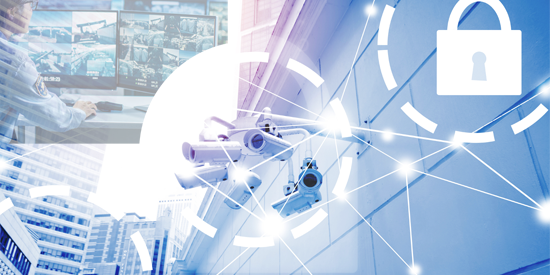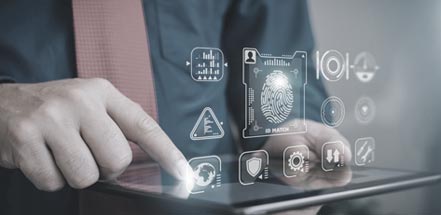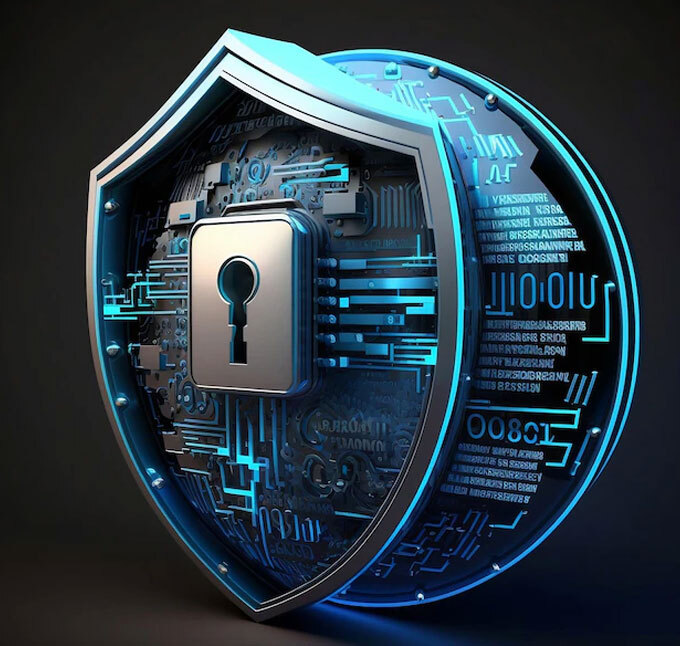
Physical Security beyond Physical Boundaries
Physical security does not only relate to an object, a human being, a defined area, or a combination of all these factors, but also refers to complete data, machines, and the entire infrastructure including objects, humans, assets, logically defined or undefined areas.
Some recent trends in the industry pose the threat of disrupting the physical security market and its conventional ways of managing the facilities, assets, data, business processes, vendor-client relationships, and the way we look at the market itself.
Through this article, I will try to pen down my thoughts and understanding about what could be these disruptions, which may be physical and technological in nature.
Youth migration
According to research there are approx. 34 Million students across India pursuing higher education and a whopping 76% of them (approx. 26 million, a lot more than many European countries or almost close to a Canadian population) moves to a handful of Indian cities. This spurs a tremendous growth in rented and owned apartments and no mobiles in use. Verification of citizens using national identity cards such as the Aadhar card (Indian National Identity card) becomes a desirable option for easy validation of a person’s identity in all these transactions. Therefore, creating a need for physical security and identity management platforms to attend to such demographic changes.
Commercial real-estate growth-
As per one of the report of the Inspector General of Registration, the pre-commitment growth in Pune (IT, BFSI) is about 48%, and 33% in Mumbai(IT, BFSI, HealthCare,) followed by Bangalore, and New Delhi Area.
In the commercial segment alone, the overall growth in the commercial property registration is about 28% more than that of in 2016. As per another report from one of the leading global PMC, Mumbai is the fourth in the world in the upcoming offices list after Shanghai, Beijing, and Mexico City. However, the impact of the country’s economic volatility on the overall investors’ trust and the timelines of the projects cannot be denied.
Therefore, the role of a PIAM platform like IDCUBE has grown by leaps and bounds, which connects multiple platforms, for both access control and identity management. The platform picks up and feeds data to/from multiple sources and puts them under a constructive workflow.
Integrated work and sports facilities-

Co-Working spaces cut 20-25% of the total cost to an organization, therefore, the need of the hour is to develop more innovative and system specific solutions. Many young companies from far west developing very specific solutions for shared workspace. It becomes quite exciting for a team like ours in IDCUBE, which is a subject matter expert in managing multiple Physical and Biological identities. Although, the developers and product analysts have to be careful in designing the better user experiences, convenient and reliable solutions for younger generations, and at the same time a platform which could offer business analytics for the shared spaces to keep the expenses in check and provide them with good ROI.
Upcoming shift in smart world
Success for smart cities lies in integrating the traditional processes and conventional technologies to smart technologies. IDCUBE is studying the future of smart cities wherein people may have access to public places based on their privileges, their common membership to the commercial centers,food courts etc. Providing access to the city authorities based on their departmental right for using public places can be an added benefit.For example, an authorized retailer can be provided with access to transponder, while the suppliers will only get access within certain time frames using their license plates. Police, fire trucks and ambulances always have swift access with heavy duty RFID/Bluetooth (www.hidglobal.com) tags and city representatives may get access with their normal access badge.An SEZ or IT park may track the visitors and vehicle roaming around the premises from some Bluetooth or RFID transponders, a Mall may pick up the information of the visitors visiting to target a specific marketing strategy etc. etc. However, we’ll see it in use to some extent in coming five years and see how it behaves on ground or may be some other disruption like AI would come and just take over everything we are talking about.
Technological disruptions-

- Low cost solutions doesn’t mean that we need to position a device which is cheap in cost and quality. Instead, it indicates towards the value engineering of the whole solution which will be a good fit in the environment, offering flexibility to the user, without compromising with the functional requirements.
- Increasing use of technology,
The mobile phone can act as your new badge, with Bluetooth and NFC credentials, apart from facilitating calls to the visitor, assigning access and passing on credentials.
Virtual machines, multiple application environment, multiple logins for different applications, managing all these interfaces and infrastructure are making the environment more complex for IT Operations team to handle which could also reduce the usage of these platforms.
At the same time it gives an opportunity to the players like us (www.idcubesystems.com) to deliver an open platform solution which could integrate them all and offer single sign-in options.
Most of the time security is considered as the liability to the organization unless there is an unfortunate incident, which makes it vital for a developer to deliver the easy to use and more interactive open platforms.
HID Global an access control giant has done exactly the same, wherein a smart watch, being used to track your daily physical activity, now gives you an option to access your office or home with interactive message facility.
- Interoperability of devices and solutions– with the magnitude, force and pace with which the physical disruptions or the changes are taking place, interoperability has become the new hit. The client expects to be free from proprietary environment and pick his choice as a solution. For quite some time the corporate users with global presence have been working with multiple security solution manufacturers and service providers. As a consequence, they are now finding it difficult to bring uniformity or to migrate it to a single platform. This has raised concern about the efficiency of security systems amongst the companies, encouraging many of them to look into solutions that are open from Hardware to Hardware, hardware to software and software to software.
- Mobile Phone– We have approx. 300million smart phone users in India and 65-70million taxpayers, constituting only 25% of the smart phone users, I am surprised about the whereabouts of the balance 75%. However, what I’m trying to convey is that as on date almost everyone can use a phone either for security access or identification. We already see a lot of airports, cinemas, theme parks, etc. are using barcodes on the phone to give access to certain checkpoints.

We have been very aggressive, testing the new solutions like Guard Tour, Police routings, Head Counts, Access Control, T&A, Classroom T&A, Fleet Management, on Android and IOS platforms, Consumerization of security will change the vendor playing- fields in this industry.
- Shift to IP network- is a basic requirement for a city, country, organization or the systems to merge in the smart world. While I was scrolling through https://ipinfo.io/countries/in about the no. of active IP addresses in India, my patience collapsed contain up to 30 million and I just happily left it there as I was sure of having multiple smart cities across India very soon and there would be a lot to explore for millions of engineers.
- CLOUD- is actually the game changer and may bring a lot of changes to the OEM-Vendor relationships in the Security Industry. Platforms like Salesforce and Oracle have changed the user experience and trust in cloud to make it simple for us to convince a user, who normally have doubts about security of the data, redundancy, uptime, maintenance, etc. However, it takes away a lot of risk and manpower expenses of an organization when they opt for a cloud based solution. This is due to the fact that the required infrastructure to support a safe and secure environment exists in all the good data centers. We believe platforms like Microsoft Azure and Amazon would even take care of multi redundancies for the most satisfying business sustainability.
- Domain logic- is nonexistent in classical physical security applications, but customer desires a lot more than just a simple access control solution. The clients expect a lot of workflows and compliance automation to save a lot of manual operations. Their desire for applications that are tuned to their domain. In one of the discussion around an Identity Management project for one of the global manufacturing giant, we understood that it takes them 2 months to actually print a card before they hand it over to the employee or the contractor. We are living a life too fast personally and professionally to wait for the processes to take a couple of months.
- Applications– traditionally companies have been dependent on different applications for different task, for example, CCTV, access control, visitor management, card printing, biometrics etc.

Customer expect one single integrated platform without compromising on functionalities as it helps them in saving infrastructure and manpower cost, at the same time integrated or converged platforms offer more analytical reports for quicker on field actions.
IOT- is a big buzz word both in the academic and professional world; IT/ITES, appliances, consumer electronics, automations, etc. it’s all about collecting the data from multiple communication points and information sources or transponders to some transceivers and publishing it through the cloud to a web world. Physical security is about securing human, assets, data, information, premises etc. and creating a very clear partition between the internal and external worlds. Hence, availability and information security are the two most important reasons for a security manager to switch to the IOT world.











